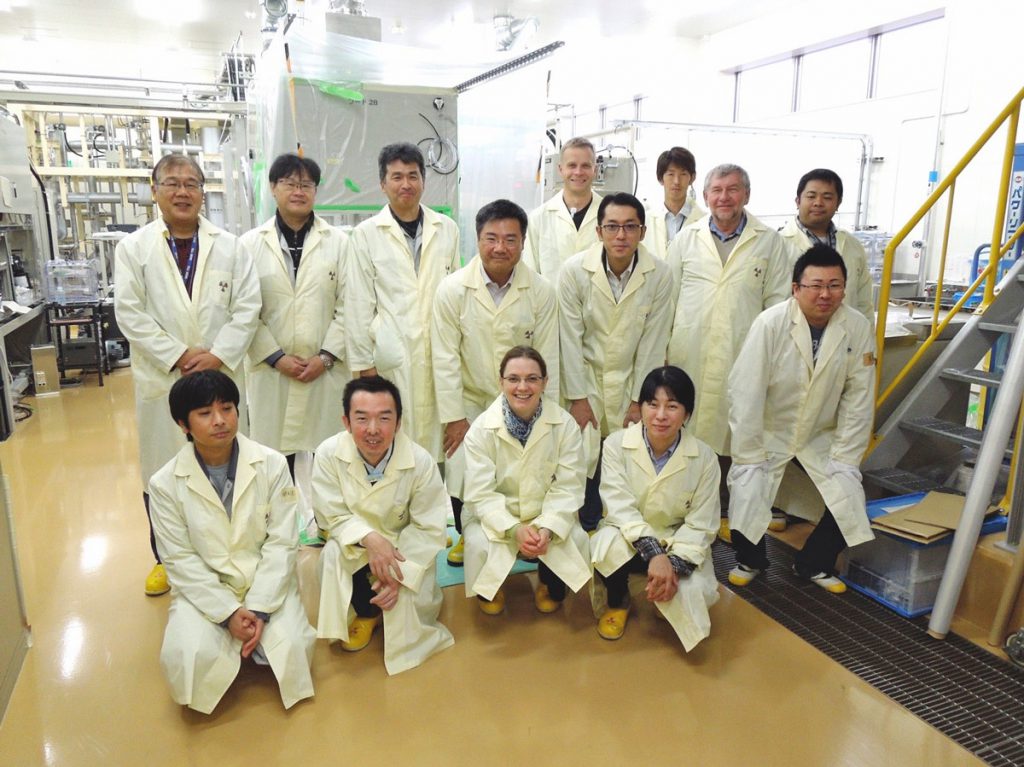Experts measure the tritium retained inside dust particles produced in a tokamak

Members of the Joint Team at the Radioactive Isotope Experimental room, Rokkasho Fusion
The fusion reaction requires two types of hydrogen: deuterium and tritium. Scientists have always wanted to learn more about the impact of the reaction on the materials that form the wall of the vacuum vessel, the chamber housing the super-hot plasma. For the first time ever, through the Broader Approach agreement, a scientific partnership signed between Europe and Japan, experts have successfully measured the amount of tritium in the metal dust on walls similar to those of ITER. This will help scientists develop models to calculate the quantity of tritium that will be retained in the ITER Vacuum Vessel and improve several aspects of safety.
How did they achieve this breakthrough?
A joint team of EU and JA researchers carried out the tests on wall samples extracted from the Joint European Torus (JET), UK in the IFERC materials laboratory in QST Rokkasho Fusion Institute, a state of the art research facility handling tritium and beryllium materials,. QST and Fusion for Energy (F4E), the two parties responsible for the implementation of the Broader Approach agreement, conducted the comprehensive analysis in close collaboration with research institutes and universities in Europe and Japan. Apart from calculating the tritium inside a small amount of dust particles, the joint team of researchers developed a “new imaging technique” that simultaneously shows the source of many dust particles and the distribution of tritium concentration. The development of the new micro-analysis techniques was carried out using small amounts of metal dust samples (one to a few mg). A joint research paper by Europe and Japan will present the findings in the IAEA Fusion Energy Conference in May 2021.

Who contributed?
The long standing collaboration in this area dates back to 2014 relying on the exchange of know-how and expertise of scientists from Europe and Japan. Europe relied on the contribution of Culham Center for Fusion Energy, National Center of Scientific Research, DEMOKRITOS, University of Basel, National R&D Institute for Physics and Nuclear Engineering, Max Planck Institute for Plasma Physics, Wuppertal Institute for Climate Environment and Energy, VTT Technical Research Center, University of Helsinki, University of Lisbon Institute for plasma fusion, University of Latvia Institute for Solid State Physics, KTH Royal Institute of Technology, Warsaw University of Technology, Ruđer Bošković Institute. From Japan, the National Institutes of Natural Sciences, the National Institute for Fusion Science, Ibaraki University, Kindai University, Shizuoka University, Shimane University and University of Toyama were amongst those contributing to the findings.